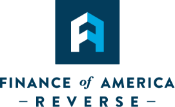People are living longer than ever, and that has a tremendous impact on retirement planning; people have to plan on funding thirty-year or longer retirement periods. With so much potential time in retirement, planning becomes essential. You will need to build a financial cushion to have a comfortable and secure retirement.
Planning for retirement starts with determining how much time you have to save money and the type of retirement goals you have Different retirement lifestyles have very different financial demands. For example, if you have retirement dreams of traveling the world, then you will need to save much more than if you aspire to spend your time relaxing on the porch. The first step is determining the retirement lifestyle you would like to have.
Establish living expenses
Aside from the variable costs that will come with the lifestyle, your overall living expenses should, in theory, be less than when you retire because you will be spending less on everyday expenses for work such as gas, payroll taxes, and saving for retirement. Financial planners often say a good rule of thumb is that you should plan to spend about 50% – 85% of your current income. However, be aware that several post-career expenses may offset this reduced spending, such as increases in healthcare, home modifications, etc. Your employer likely pays for a portion of your healthcare insurance, so you should anticipate an increase in retirement. On top of that, the cost of health care has increased in recent years.
Pay off debt
The more debt you bring into retirement, the less you will have to spend on living expenses and entertainment. However, some debt, such as a mortgage, may be challenging to pay off before retirement, but don’t sweat it. If you plan, this may not be a deal-breaker. Look at settling debt with higher interest rates such as credit cards, car loans, and personal loans. These will eat into your savings if they and they do not provide any tax benefits.
If your monthly mortgage payments put too much burden on your retirement budget, then you may want to consider getting a reverse mortgage as a financial planning tool. Consult a financial advisor to see if this solution makes sense for you.
Save to reach your goal
As you get into the final years before retiring, you should take a hard look at your savings. You will need to rely on your savings and investment portfolio to bridge the gap between your retirement income and your living expenses. It would be best if you considered meeting with a financial consultant to make sure that your investment strategies align with your retirement timeline. Experts recommend putting your money in less volatile investments to reduce the risk of depleting your portfolio without having time for the market to reset. If you have time left in your career, you may have a higher tolerance for investment risk. In this situation, you may want to consider adding higher-yield bonds and equity investments to your portfolio to increase your long-term return potential.
If you are close to your retirement years, but you don’t have a solid retirement income plan in place, you are not alone. In 2019, the Federal Reserve reported on the economic well-being of US households stating that one-quarter of adults have no retirement savings or pension whatsoever.
Work part-time
Whether you are looking to stay active in the workforce or if you are unsure if your savings will last, adding another income stream during your retirement years can add significant flexibility to your retirement. Even a modest income can help bridge the income gap in your retirement plan. If you are highly-reliant on Social Security income, you should consult with a financial expert before taking on a post-retirement job as it may change your social security benefits.
Leverage your home
If you have extra space around your house, you may consider homesharing as a source of income. Companies such as Silvernest are providing safe and seamless ways for baby boomers to find qualified housemates to share their home. Aside from the extra retirement income, homesharing can add help around the house and increased social interaction.
Many baby boomers who retired without pensions are taking advantage of their home equity as part of their retirement plans. If you own your home or have significant equity in your home, you may want to consider using this to supplement your retirement income. A reverse mortgage is a specific type of home equity loan that could provide monthly income without requiring repayment until you permanently leave the home. One of the options of a reverse is to receive your loan amount as lifetime payments. As with any financial decision, you should always consult with a trusted financial professional and an experienced reverse mortgage originator.
Start working your plan
Don’t wait until you retire to start working on your plan. People who proactively develop an income plan earlier in their careers have much more fulfilling retirement years. You should start looking at your financial situation as soon as possible and work with an advisor to help meet your retirement goals. Your retirement dreams may be closer than you think.
Oregon Only:·When the loan is due and payable, some or all of the equity in the property that is the subject of the reverse mortgage no longer belongs to borrowers, who may need to sell the home or otherwise repay the loan with interest from other proceeds. FAR may charge an origination fee, mortgage insurance premium, closing costs and servicing fees (added to the balance of the loan).·The balance of the loan grows over time and FAR charges interest on the balance.· Borrowers are responsible for paying property taxes, homeowner’s insurance, maintenance, and related taxes (which may be substantial). We do not establish an escrow account for disbursements of these payments. A set-aside account can be set up to pay taxes and insurance and may be required in some cases. Borrowers must occupy home as their primary residence and pay for ongoing maintenance; otherwise the loan becomes due and payable. The loan also becomes due and payable (and the property may be subject to a tax lien, other encumbrance, or foreclosure) when the last borrower, or eligible non-borrowing surviving spouse, dies, sells the home, permanently moves out, defaults on taxes, insurance payments, or maintenance, or does not otherwise comply with the loan terms. Interest is not tax-deductible until the loan is partially or fully repaid.
©2020 Finance of America Reverse LLC is licensed in 50 states and D.C. | Equal Housing Opportunity | NMLS ID # 2285 | www.nmls.consumeraccess.org | 8023 East 63rd Place, Suite 700 | Tulsa, OK 74133 CNot all products and options are available in all states | Terms subject to change without notice | AZ Mortgage Banker License #0921300 | Licensed by the Department of Business Oversight under the California Residential Mortgage Lending Act | Georgia Residential Mortgage Licensee | Illinois Residential Mortgage Licensee | Kansas Licensed Mortgage Company | MA Lender/Broker #MC2855 | Licensed by the Mississippi Department of Banking and Consumer Finance | Licensed by the New Hampshire Banking Department | Licensed by the N.J. Department of Banking and Insurance | Licensed Mortgage Banker — NYS Banking Department where Finance of America Reverse is known as FAReverse LLC in lieu of true name Finance of America Reverse LLC | Rhode Island Licensed Lender | HUD HECMS REQUIRE PAYMENT OF INITIAL AND PERIODIC MORTGAGE INSURANCE PREMIUM.
This article is intended for general informational and educational purposes only, and should not be construed as financial or tax advice. For more information about whether a reverse mortgage may be right for you, you should consult an independent financial advisor. For tax advice, please consult a tax professional.















I WANT TO KEEP UP TO DATE ON RETIREMENT TRENDS
Follow Us.